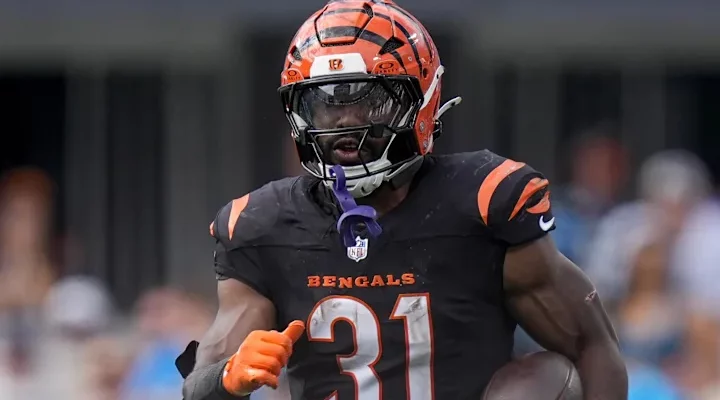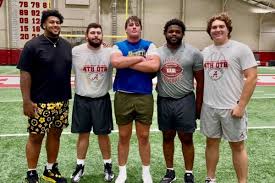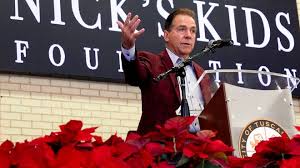The Indianapolis Colts have made a significant roster announcement that could have ripple effects on their offensive plans heading into the upcoming season, as they officially placed running back Zack Moss on the Active/Non-Football Injury (NFI) list. While this designation does not necessarily signal a long-term absence, it is a reminder of how quickly a team’s depth chart can shift due to unexpected circumstances. Moss, known for his physical running style and versatility out of the backfield, was expected to be an integral part of the Colts’ offensive rotation. His placement on the NFI list immediately sparks questions about how the coaching staff will adjust, what this means for the team’s run-heavy schemes, and which players will step up to fill the void if Moss is sidelined for an extended period.
Zack Moss has been a key contributor since being acquired by the Colts, demonstrating an ability to wear down defenses with his tough, downhill running and proving to be a reliable option in both short-yardage situations and the passing game. The Colts have long valued running backs who can not only gain yards after contact but also serve as dependable check-down targets for the quarterback, and Moss fits that mold perfectly. His injury status, therefore, is more than just a minor inconvenience—it directly impacts how offensive coordinator Jim Bob Cooter may structure the playbook during training camp. Although being placed on the Active/NFI list means Moss still counts toward the 90-man roster and can return at any time during camp, it temporarily halts his momentum at a critical point in preseason preparations.
The timing of this move is also important. Training camp is when players solidify their roles and build chemistry with teammates, particularly in the running game where timing, blocking schemes, and pass protection assignments must all be executed flawlessly. Moss’s absence opens the door for other backs on the roster to showcase their abilities. Young players and veterans alike will see increased opportunities to prove they can handle a bigger workload. For someone like Jonathan Taylor, who is already the primary back and the face of the Colts’ rushing attack, Moss’s situation may not change his own workload significantly, but it does increase the importance of finding a reliable backup who can shoulder carries and keep Taylor fresh throughout the season.
From a roster-building perspective, the Colts have always valued depth at running back. Injuries are inevitable in a grueling NFL season, and having a stable of competent backs is essential for maintaining offensive balance. The Colts’ front office, led by general manager Chris Ballard, may explore bringing in another veteran running back if Moss’s recovery timeline extends longer than anticipated. The free agent market still has options who can provide insurance, but for now, the focus will likely be on evaluating the players already in camp. Running backs like Trey Sermon, Evan Hull, and Jake Funk will have increased reps and a chance to solidify their standing. For these players, Moss’s absence might be the break they need to prove themselves.
The Active/Non-Football Injury designation itself is worth explaining for fans who might not be familiar with the technicalities. The NFI list is used when a player sustains an injury or condition outside of team-related activities. This differs from the Physically Unable to Perform (PUP) list, which applies to injuries incurred during team practices or games. Being on the NFI list means Moss cannot participate in practices or games until he is cleared by medical staff, but it is not an indication that he will miss the entire season. It is entirely possible that this is a precautionary move by the Colts to ensure Moss does not aggravate his condition early in camp. Still, the move raises eyebrows because every rep counts, particularly for a player who was expected to be a 1B option behind Jonathan Taylor.
The Colts’ offensive philosophy under head coach Shane Steichen is predicated on balance and adaptability. Last season, when Taylor was dealing with injuries of his own, Moss stepped into a starting role and delivered several strong performances, showcasing both his vision and toughness. His ability to grind out tough yards between the tackles complemented the Colts’ passing game and helped keep defenses honest. Losing Moss, even temporarily, takes away a proven insurance policy and could force the Colts to lean more heavily on less experienced players. This dynamic will be especially interesting to watch as the team evaluates rookie quarterback Anthony Richardson’s development. A strong running game is often the best friend of a young quarterback, as it takes pressure off the passing attack and sets up manageable down-and-distance scenarios.
The ripple effect of Moss’s absence goes beyond the running back position. Offensive line rotations may also be impacted, as the Colts could use camp reps to test different run-blocking schemes with the backs available. For a team that prides itself on physicality at the line of scrimmage, building continuity between the line and the running backs is crucial. Moss’s knowledge of blocking assignments and his ability to pick up blitzes make him a valuable asset not just as a runner, but as a protector for Richardson in passing situations. Without him on the field, those responsibilities will fall to other backs who must quickly earn the trust of the coaching staff.
Looking at the bigger picture, Moss’s situation highlights the precarious nature of NFL depth charts. Injuries and unexpected absences are part of the game, and successful teams are those that can adapt quickly without losing productivity. For the Colts, this is an early test of their organizational depth and scouting. The preseason will serve as a proving ground for young backs who now have an unexpected chance to earn significant playing time. It will also give the coaching staff a better sense of which players can be relied upon if injuries strike during the regular season.
Another layer to consider is Moss’s contract status and future with the team. Entering a crucial phase of his career, Moss needs every opportunity to showcase his value, whether to secure a longer-term deal with the Colts or to position himself for free agency. Missing time during training camp is never ideal for a player in his situation, as it allows others to potentially take his snaps and diminish his role. On the flip side, if Moss recovers quickly and returns to form, he could be even more motivated to prove his worth on the field. His track record suggests that he is resilient and capable of bouncing back from adversity, but the margin for error in the NFL is slim, and availability often plays as big a role as performance in determining a player’s future.
From a fan perspective, this news might be concerning, but it is not necessarily cause for panic. The Active/NFI list is often used as a precaution, particularly early in camp. Teams are more conservative with injuries during the preseason, preferring to rest players rather than risk aggravating minor issues. Moss could be activated at any point, and the Colts have not indicated that his injury is severe. In many cases, players placed on this list return within a matter of days or weeks, and the team’s decision is more about managing workloads than signaling a serious setback.
In terms of team strategy, however, every day Moss spends away from the field is an opportunity for someone else to shine. Preseason games will be critical in evaluating who can complement Taylor in the backfield. If a player like Trey Sermon or Evan Hull shows promise, the Colts could be more inclined to rotate backs heavily, even when Moss returns. The competition for the No. 2 running back spot is officially wide open, and that might bring out the best in the entire group.
The Colts also have to consider the larger context of their offense. With Richardson entering his first full season as the starting quarterback, the team is expected to lean heavily on the run game to create balance and limit mistakes. Moss’s absence, therefore, is not just about losing a backup—it is about losing a potential stabilizer in an offense that will likely undergo some growing pains. How quickly Moss can return, and how effective he is once back, could influence the Colts’ offensive rhythm in the early weeks of the season.
As training camp unfolds, all eyes will be on the Colts’ running back room. Will Moss return sooner rather than later, or will the team need to explore other options? Will an unheralded player emerge as a camp standout and earn a larger role than expected? These questions will shape the narrative over the next few weeks. For now, the Colts have to prepare as though Moss may not be available, which means every rep in camp is critical for the remaining backs.
The story of Zack Moss’s placement on the Active/NFI list is still developing, but it underscores a truth that every NFL team faces: adaptability is key to success. Injuries, both minor and major, are part of the game, and teams that can navigate them effectively are often the ones playing deep into January. The Colts’ decision to move Moss to the NFI list may be a precautionary measure, but it is a reminder that roster stability is fragile, and depth is a luxury that cannot be taken for granted. As the Colts move forward, they will hope Moss returns soon, but in the meantime, they will continue to evaluate their options and ensure they are prepared for every scenario that the season might bring.



